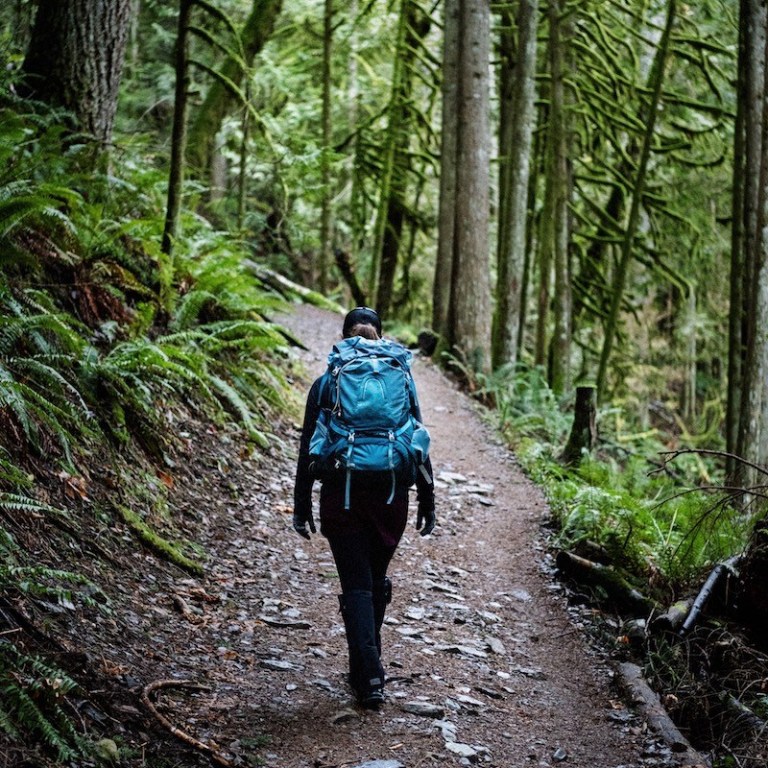
It’s easy for aspiring thru-hikers to get caught up in the preparation process – reading Yogi’s PCT handbook, reading blogs written by previous thru-hikers, setting up a resupply strategy, researching gear, buying gear, figuring out base weight and how to lower it and trying to maintain a training schedule before getting on trail. I know because I spent A LOT if time doing all of these things last year when planning my 2018 PCT thru-hike.
In the grand scheme of things, my first thru-hike along the PCT in 2018 was a success. I made it to Canada without any major injuries, met a bunch of amazing people along the way and had my life forever changed. Now that I’m in the midst of planning my second thru-hike along the PCT for 2019, there are a few things I’m doing differently for my thru-hike this year. One of the big things I’m changing this time around is how I train both my body AND mind for my hike.
In 2018, I focused on physically training my body to hike all of the miles, but training my BRAIN should’ve been my number one priority. Why? 95% of thru-hiking is a mental game. The Pacific Crest Trail Association estimates 50-60% of hikers who attempt to thru-hike PCT fail. Yikes! There are many reasons why – unrealistic expectations, running out of time and money, getting injured, having a family/life emergency or becoming mentally fatigued. Training your brain to thru-hike means developing necessary skills to help keep a positive mindset along your hike, especially when things gets hard, boring, lonely, scary, cold and wet.
I’ve hiked with super physically fit hikers and not-so-fit hikers along the PCT. Being physically fit doesn’t automatically mean your thru-hike will be a success. A big part of having a successful thru-hike requires having a positive mental frame of mind or at least surround yourself with someone who does. Not every day on the trail is going to be magical, inspiring and picturesque. For as many awesome days there are on trail, there will be plenty of tough ones too. Here are six ways to train your brain to help you navigate successfully through a long-distance thru-hike.
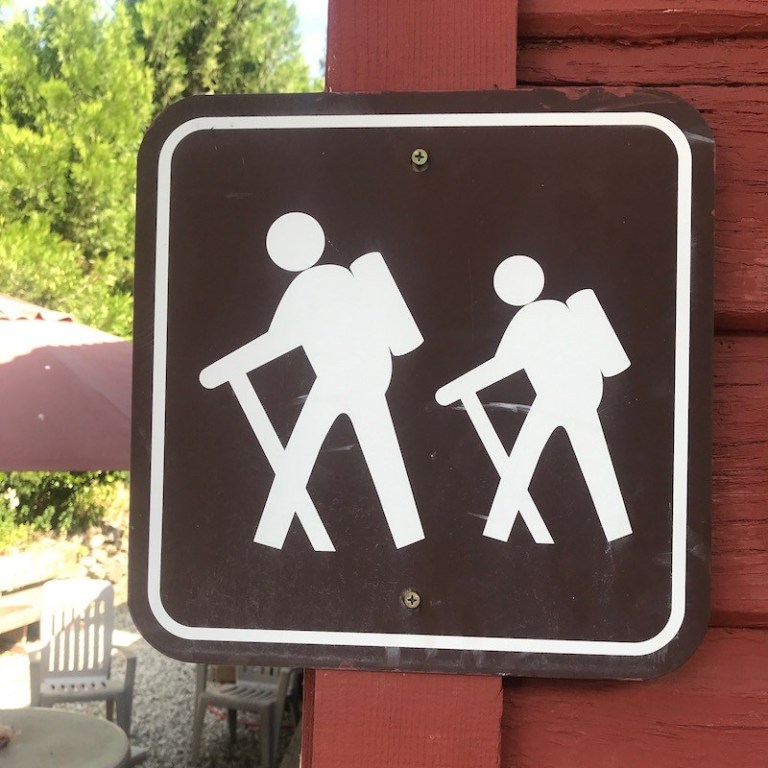
1 – Go Public With Your Why
Know why you want to thru-hike before getting on trail. Once you figure out your why, write it down in your journal. Then go public about it. Tell your friends, family, coworkers, yoga teachers, customers and anyone else who wants to listen to you talking about thru-hiking. Blog about your why. Share it on your social media. When the tough gets going on trail, going public with your why will help you remember why you’re doing this in the first place. It will also help hold you accountable. You’re less likely to quit when you know several people back home are rooting for you and following your journey.
I chose to be very public with my why for hiking the PCT in 2018 and again in 2019. It was important to me that I share my why in a public format because I wanted people to know it wasn’t just about me being crazy. I wanted the people in my life to know that I didn’t just wake up one day, quit my job and decide to go hike the PCT for five months. There was a lot of thought, preparation, dedication, passion and purpose behind my decision.
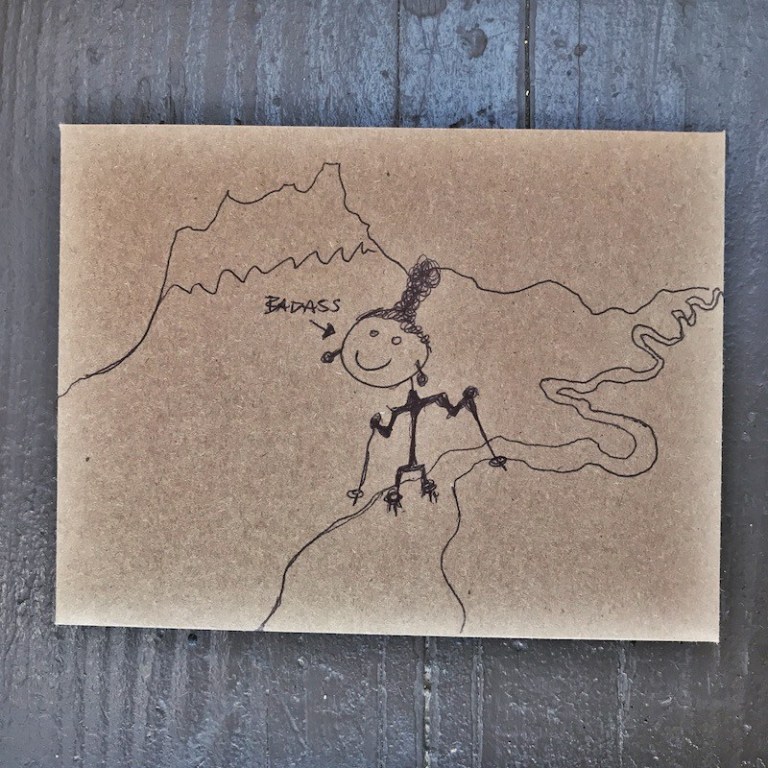
2 – Build A Trail Support System
A trail support system can consist of people in your daily life like friends, family members and coworkers. It can also include people you’ve never even met. Start building a trail support system by telling people in your life about your upcoming thru-hike, whether that be in-person or online through a blog and or social media. I talked about hiking the PCT to anyone in my life who wanted to listen – friends, family, coworkers, students taking my yoga classes, on my blog, posts I’d make on Facebook and photos I’d post on Instagram. Once I posted on my blog why I wanted to hike the PCT, several people reached out to me, both in-person and online, and told me how excited and inspired they were to follow my journey. From there, my trail support system began building itself naturally and continued to grow all the way to Canada.
I had no idea having a trail support system would play such a vital role in my 2018 PCT thru-hike. Having a trail support system made the toughest days on trail much more manageable. Every night, I’d journal about the details of my day and then turn some of those journal entries into posts on my blog. I found writing about and sharing my trail experiences on my blog, whether they were awesome or scary and vulnerable, to be incredibly therapeutic. It was a way for me to experience these moments with my trail support system even though I was out there experiencing most of these things on my own.

Not only has my trail support system been therapeutic, but this system of amazing individuals has also provided me with countless forms of trail magic. Several people (some of whom I’ve yet to meet in-person) have sent me countless letters offering words of encouragement and love on trail, many of these bring me to tears as I read them out loud to the members in my trail family. Some even sponsored various amenities I needed along my hike through my trip registry. I’ve received multiple care packages along the way filled with baked goods, my favorite snacks and toiletries to use at my next town stop. Friends and family have met me on trail to take me out to dinner, put me up in a hotel/fancy condo/their house for the night, take me into town to do laundry and resupply for an upcoming section and have even hiked a section of the trail with me. While hiking through Yosemite, my parents met up with me just to give me a hug, feed me and tell me how proud they were. Then two miles from Manning Park, my Dad met me on trail where we walked arm and arm all the way to the end together.
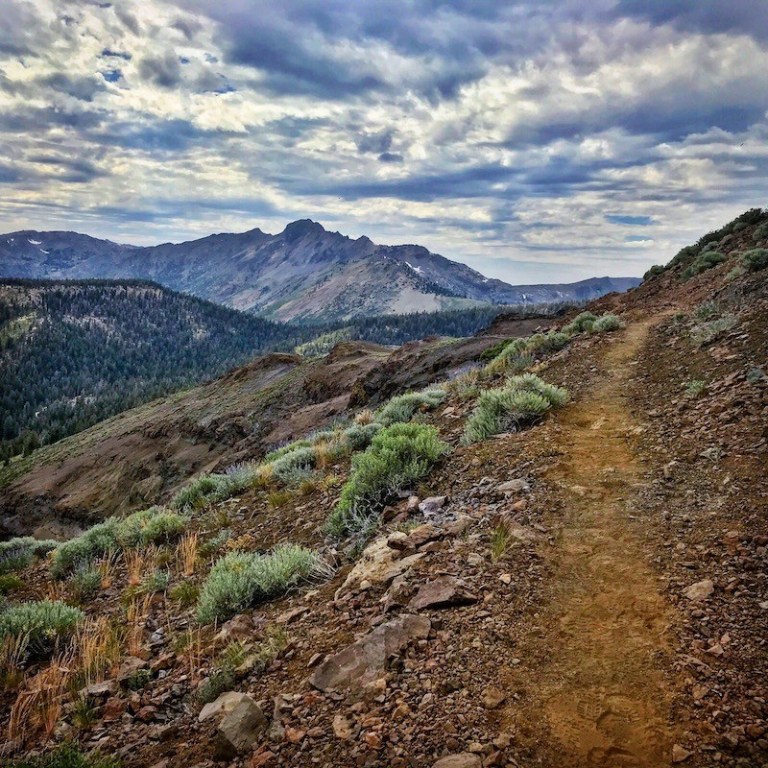
3 – Get Comfortable With Being Uncomfortable
There are going to be plenty of uncomfortable moments while thru-hiking. Why not try to get as comfortable as you can with the things that make you uncomfortable before getting on trail?
For my hike in 2018, I taught myself how to be comfortable with hiking by myself because I knew I’d be starting on the PCT alone. I took myself on several solo hikes through the woods. My solo hiking proved to be incredible mental training for my PCT thru-hike. The more solo hikes I went on, the more comfortable I became with being in the Great Outdoors alone. I learned to enjoy my solo adventures. For the times I did get scared, I developed tactics to help put myself at ease. By the time I started hiking the PCT, I wasn’t scared to hike it alone at all.
In addition to solo hikes, I’d also recommend trying solo overnight and weekend backpacking trips. Before hiking the PCT, I had only gone on a handful of overnight backpacking trips, but each of the trips I had gone on were with friends. I had never spent the night outside by myself. Since this was something I had never done before, I thought it would be my biggest fear of hiking the PCT.
Once I got in the High Sierra, I had to deal with a lot of uncomfortable moments – navigating over steep snowfields, battling countless swarms of mosquitoes and biting black flies, falling and tripping over my own feet, not having anyone else to talk to whenever I took a break, hiking in the dark and of course, camping alone. The more I camped by myself though, the more I learned to enjoy the solitude, the less scary this fear of mine eventually became. Turns out my biggest thru-hiking fear wasn’t sleeping outside by myself. It was having to ford rivers and creeks by myself, something I didn’t know I was afraid of until I had to do it. Just like with camping alone though, the more time I spent outside by myself doing all of these uncomfortable things, the less scary they became.
Another uncomfortable thing worth learning how to be comfortable with is being dirty. Accept the fact that you will always be dirty when hiking, even after you’ve had a shower in town or gone for a swim in a lake. There will be several days on trail when you won’t have access to a shower. Some thru-hikers embrace their dirtiness as they go and wear it as a badge of honor. For me, I learned to be okay with being dirty whenever I was on trail, but taking a shower was always my number one priority (and biggest pleasure, besides drinking an ice cold root beer) on a Town Day.
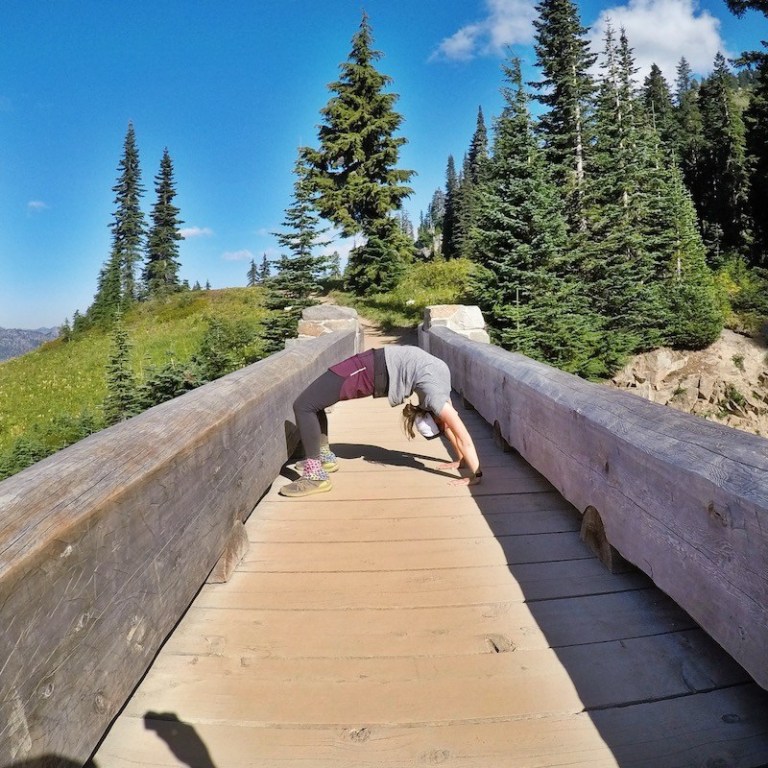
4 – Practice Yoga
Yoga offers many physical benefits, especially for thru-hikers. Yoga strengthens the core (vital for backpacking), increases flexibility (helps keep injuries at bay), teaches you how to control your breathing (comes in handy for the numerous big climbs on trail), and improves balance and stability (preparing you for river and stream crossings, rocky scrambles and helps keep the nasty ankle rolls at bay).
Yoga is also an incredible mental strengthener. I enjoy practicing Bikram Yoga, a series of 26 postures and two breathing exercises practiced in a room heated to 105 degrees with 40% humidity for 90 minutes. This format of yoga can feel downright torturous for most people, myself included. It’s probably why I love it so much and have continued to practice it for several years.
What I love about Bikram Yoga is that it’s the same series of postures, done in the same order for each class. Instead of worrying about what posture is coming next, I can literally shut my brain off and practice an open-eyed meditation while moving my body through the postures. Every class is an opportunity to practice focusing on my breath instead of letting it get away from me, sending my body and mind into a “fight or flight” mode. It’s also excellent practice for working my body and mind through extreme heat and uncomfortable conditions while keeping calm and focused. It’s in the studio where I learn to tell myself encouraging mantras throughout class and then take these positive messages with me on trail and remind myself when the going gets tough.
Attending early morning yoga classes is another great way yoga helps train the brain for a thru-hike. For me, going to a yoga class early in the morning helps train myself to be a morning person. Being a morning person helps make it easier to get up early on trail, which leads me to be able to watch more sunrises on trail.
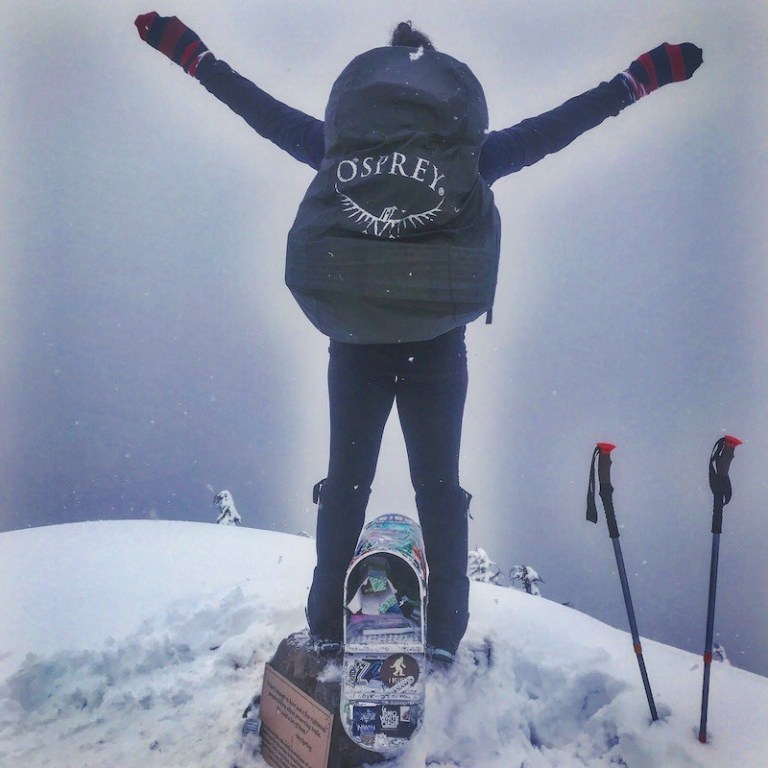
5 – Practice Using Your Gear On Trail
Not only do solo day hikes and practice trips help you learn to become more comfortable with being outside by yourself, they’re also a great way to practice using your gear – to see what gear works and doesn’t work for you before lugging everything on your long-distance hike. You can learn about gear by reading reviews online and watching YouTube videos, but the best way to learn how to use your gear is to use it in the field. These trips will help you assess where you’re at physically and mentally. You’ll learn how you can cut down your pack weight by ditching gear you don’t use and/or need. You’ll become more efficient at packing your pack. Practice trips also help build confidence, eliminate fears and get you excited for your upcoming thru-hike.
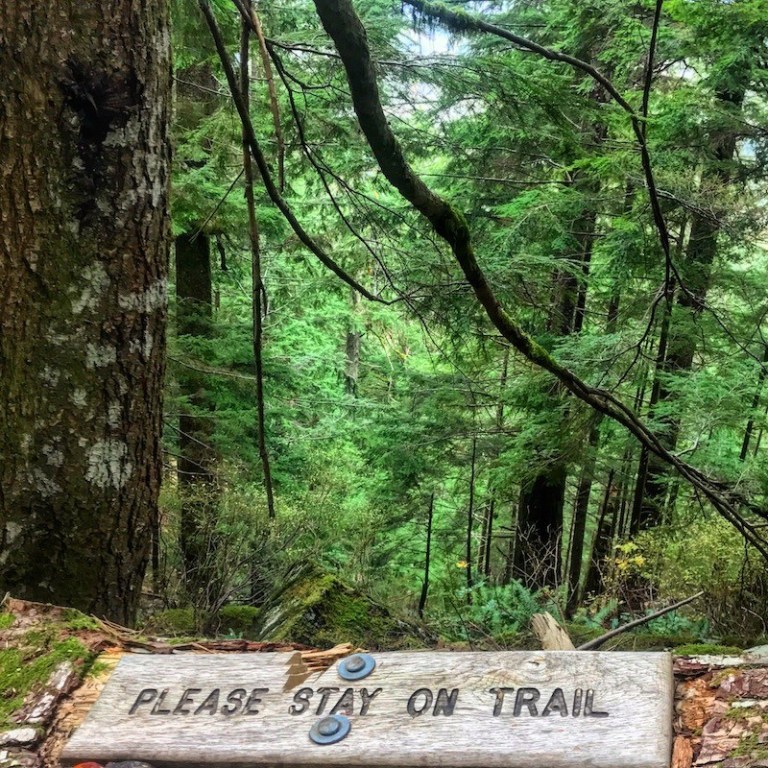
6 – Take A Hike
The only thing that truly trains you for a thru-hike is thru-hiking. This is why thru-hikers talk about earning their “trail legs” within the first 700 miles of hiking the PCT. Since hiking 20 miles a day, multiple times a week isn’t feasible for most of us until we’re actually doing our long-distance hike, day hiking is the next best option. Aim to go one at least one hike a week, with as many miles and as much elevation gain as your schedule and body can handle.
Hiking can physically help train your body physically just as much as it can train your brain mentally. Before taking a leave of absence at work or quitting your job to embark on a grand adventure of hiking 2,650 miles to Canada, make sure you enjoy hiking first. It’s easy to romanticize the idea of hiking the PCT, but what happens when the novelty of thru-hiking wears off after the first few hundred miles? Are you going to be motivated to keep going?
If hiking has been part of your PCT training regimen, you’ll know that not every hike is fun and full of sunshine. I love hiking, but sometimes hiking can be really tough. Having done all of my hiking training in the Snoqualmie and North Cascade region of Washington, I’ve had to learn how to hike in plenty of less-than-desirable conditions – rain, fog, snow, wind, cold, on ice and through mud. The crappiest hikes have helped me prepare for thru-hiking the PCT the most because they’ve taught me how to persevere through less than ideal conditions. The not-so-great hikes help me learn how to embrace the suck, stay positive in challenging conditions and enjoy myself while doing it, all of which were instrumental in my success of thru-hiking through a very wet and cold portion of the PCT in Washington.

1 Comment on 6 Ways to Train Your Brain For A Thru-Hike